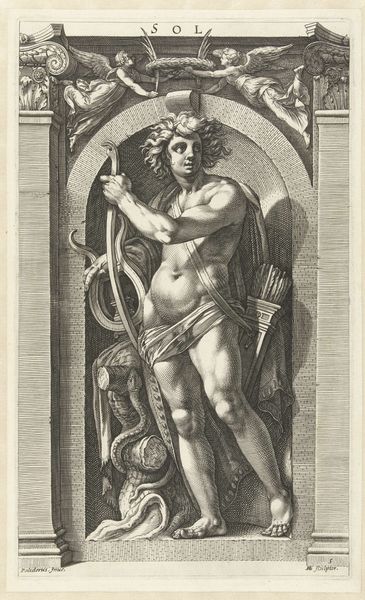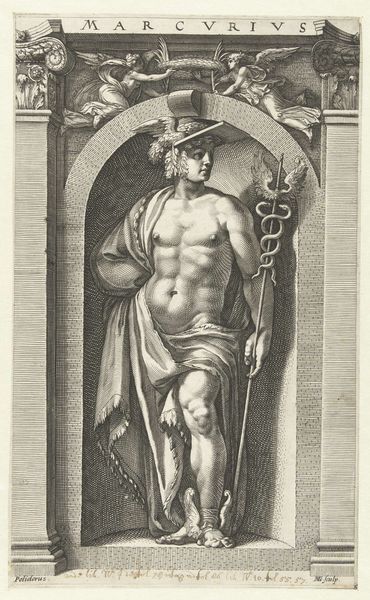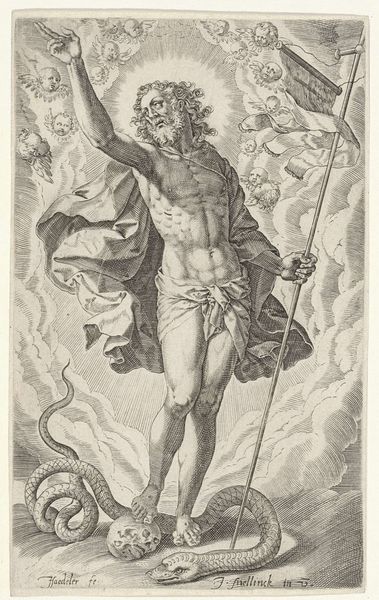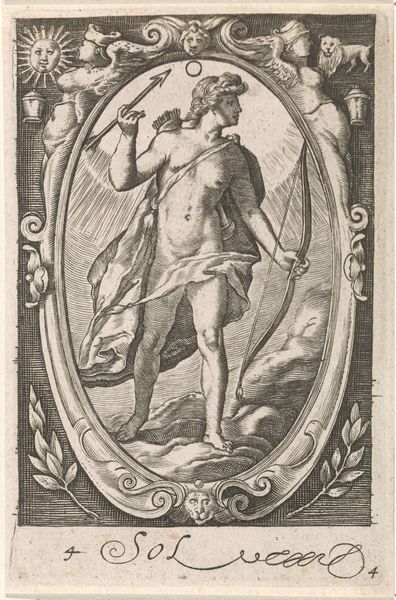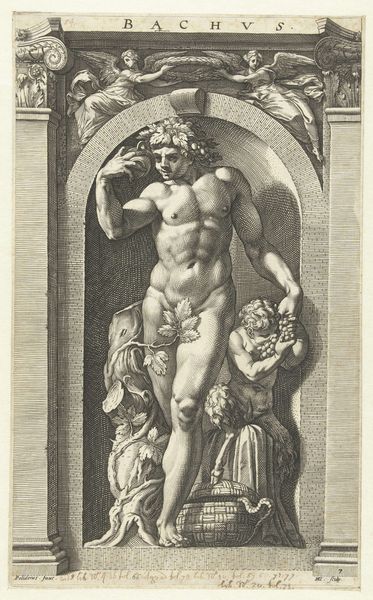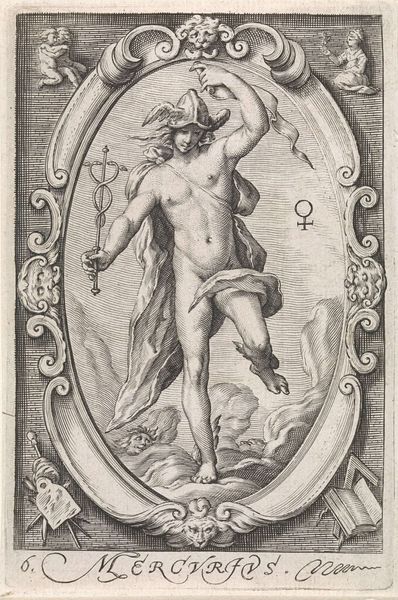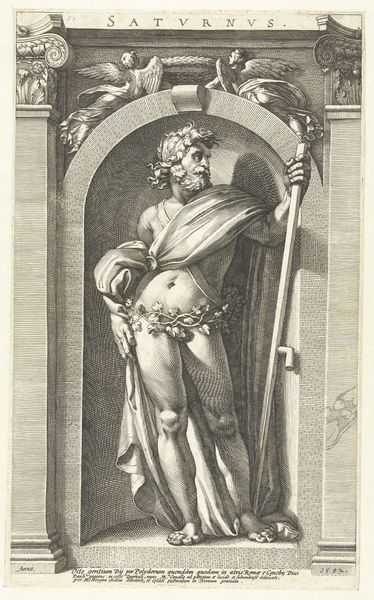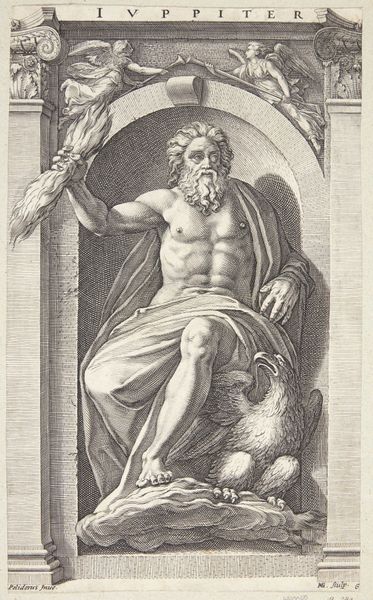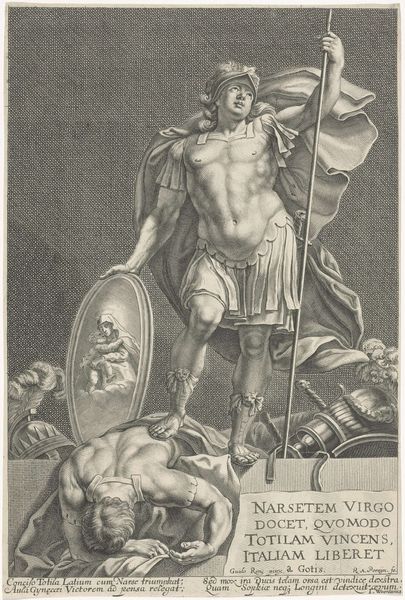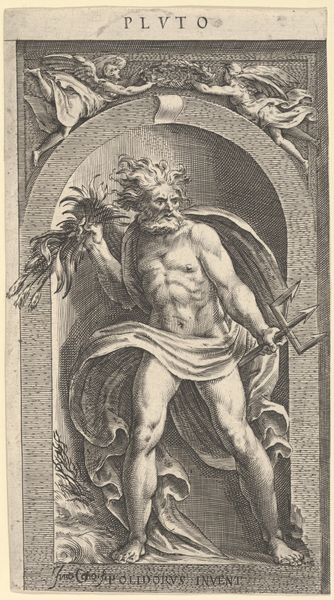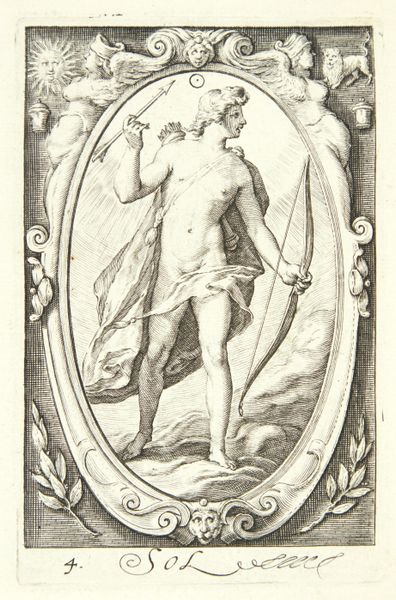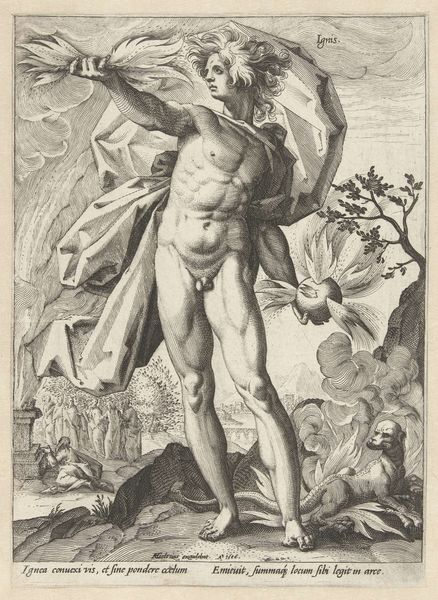
engraving
#
portrait
#
mannerism
#
figuration
#
ancient-mediterranean
#
history-painting
#
nude
#
engraving
Dimensions: height 354 mm, width 215 mm
Copyright: Rijks Museum: Open Domain
Curator: Hendrick Goltzius's "Neptune," dating back to 1592, greets us. It's an engraving, offering a powerful depiction of the Roman god of the sea. What's your first impression? Editor: Muscular. Overwhelmingly muscular. And intense! Neptune's gaze pins you right in place, doesn't it? The overall tone, for me, feels…confrontational. Almost as if daring you to question his authority. Curator: Absolutely. That was Goltzius. It’s very Mannerist. Think about what Neptune embodies: power, control over the vast ocean. But Goltzius layers it with a very palpable sense of *human* strength. You can see it in the defined muscles and dramatic pose. It isn't just about divine authority; it's about potent, physical presence. Editor: The trident certainly drives that home. A tool of power but also destruction and, perhaps surprisingly, here it could function as a phallic symbol... The Roman god's domination is not just about the sea, then. And it almost seems too much, doesn’t it? That muscularity pushes it towards something performative. Look, the little putti on the upper scene look terrified... Curator: It is theatrical, isn’t it? Part of that is definitely Mannerist theatricality, but perhaps part is also the way Goltzius is unafraid to celebrate masculine strength here in a very upfront, bold fashion. Even the laurel branch feels like an aggressive form of ornamentation—as if it’s been clutched in a very assertive fist rather than merely held! Editor: Yes! Even the shading, which adds to that effect. All the lines emphasize that sculpted quality. The drapery too, looks less like clothing and more like…muscles trying to hide under fabric? It is amazing to contemplate how Goltzius captures a sense of potency not just through symbol and story but in every mark on the page. He makes that visual impact inescapable. Curator: A brilliant culmination of artistry and, really, imagination—it's a vivid reminder that ancient myth can, and perhaps should, feel relevant to any moment in time. It certainly lingers with you, doesn’t it? Editor: Absolutely. There's an enduring psychological charge about such artworks, a link between our primal selves and these monumental figures that culture and religion create for us. That's an essence that always bears reflection!
Comments
rijksmuseum about 2 years ago
⋮
Goltzius made this print after a monochrome fresco from around 1522-1527 on the façade of a Roman house, painted by Raphael’s pupil Polidoro da Caravaggio. Heemskerck, too, must have seen and copied the famous and fragile fresco, which has since been lost. Some elements from Heemskerck’s Neptune in this gallery, such as the right hand that seems to burst out of the picture plane, were inspired by Polidoro’s composition.
Join the conversation
Join millions of artists and users on Artera today and experience the ultimate creative platform.


